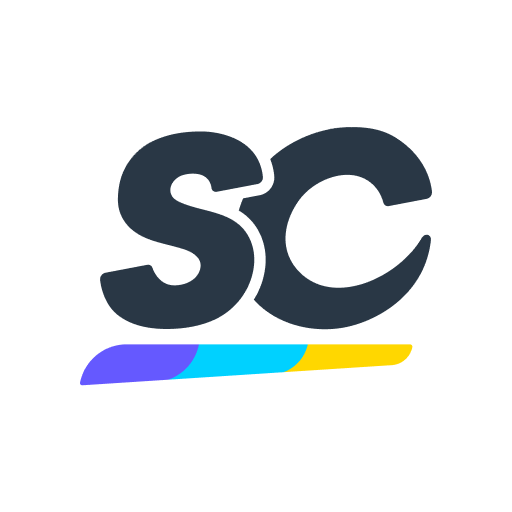Title Page
-
Client / Site
-
Location
-
Conducted on
-
Prepared by
General Workplace
GENERAL WORK ENVIRONMENT
-
Are all worksites clean and orderly?
-
Are all spilled materials or liquids cleaned up immediately?
-
Are combustible scrap, debris, and waste stored safely and removed from the worksite promptly?
-
Are all oil and gas fired devices equipped with flame failure controls that will prevent the flow of fuel if pilots or main burners are not working?
-
Are paint spray booths, dip tanks and the like cleaned regularly?
Exit Doors
EXIT DOORS
-
Are doors that are required to serve as exits designed and constructed so that the way of exit travel is obvious and direct?
-
Are windows that could be mistaken for exit doors, made inaccessible by means of barriers or railings?
-
Are exit doors openable from the direction of exit travel without the use of a key or any special knowledge or effort, when the building is occupied?
-
Is a revolving, sliding or overhead door prohibited from serving as a required exit door?
-
Where panic hardware is installed on a required exit door, will it allow the door to open by applying a force of 15 pounds or less in the direction of the exit traffic?
-
Are doors on cold storage rooms provided with an inside release mechanism that will release the latch and open the door even if it's padlocked or otherwise locked on the outside?
-
Where exit doors open directly onto any street, alley or other areas where vehicles may be operated, are adequate barriers and warnings provided to prevent employees stepping into the path of traffic?
-
Are doors that swing in both directions and are located between rooms where there is frequent traffic, provided with viewing panels in each door?
Spraying Operations
SPRAYING OPERATIONS
-
Is adequate ventilation assured before spray operations are started?
-
Is mechanical ventilation provided when spraying operation is done in enclosed areas?
-
When mechanical ventilation is provided during spraying operations, is it so arranged that it will not circulate the contaminated air?
-
Is the spray area free of hot surfaces?
-
Is the spray area at least 20 feet from flames, sparks, operating electrical motors and other ignition sources?
-
Are portable lamps used to illuminate spray areas suitable for use in a hazardous location?
-
Is approved respiratory equipment provided and used when appropriate during spraying operations?
-
Do solvents used for cleaning have a flash point of 100E F or more?
-
Are fire control sprinkler heads kept clean?
-
Are "NO SMOKING" signs posted in spray areas, paint rooms, paint booths, and paint storage areas?
-
Is the spray area kept clean of combustible residue?
-
Are spray booths constructed of metal, masonry, or other substantial noncombustible material?
-
Are spray booth floors and baffles noncombustible and easily cleaned?
-
Is infrared drying apparatus kept out of the spray area during spraying operations?
-
Is the spray booth completely ventilated before using the drying apparatus?
-
Is the electric drying apparatus properly grounded?
-
Are lighting fixtures for spray booths located outside of the booth and the interior lighted through sealed clear panels?
-
Are the electric motors for exhaust fans placed outside booths or ducts?
-
Are belts and pulleys inside the booth fully enclosed?
-
Do ducts have access doors to allow cleaning?
-
Do all drying spaces have adequate ventilation?
Flammable & Combustible Materials
FLAMMABLE & COMBUSTIBLE MATERIALS
-
Are combustible scrap, debris and waste materials (i.e. oily rags) stored in covered metal receptacles and removed from the worksite promptly?
-
Is proper storage practiced to minimize the risk of fire including spontaneous combustion?
-
Are approved containers and tanks used for the storage and handling of flammable and combustible liquids?
-
Are all connections on drums and combustible liquid piping, vapor and liquid tight?
-
Are all flammable liquids kept in closed containers when not in use (e.g. parts cleaning tanks, pans)?
-
Are bulk drums of flammable liquids grounded and bonded to containers during dispensing?
-
Do storage rooms for flammable and combustible liquids have explosion-proof lights?
-
Do storage rooms for flammable and combustible liquids have mechanical or gravity ventilation?
-
Is liquefied petroleum gas stored, handled, and used in accordance with safe practices and standards?
-
Are liquefied petroleum storage tanks guarded to prevent damage from vehicles?
-
Are all solvent wastes and flammable liquids kept in fire-resistant covered containers until they are removed from the worksite?
-
Is vacuuming used whenever possible rather than blowing or sweeping combustible dust?
-
Are fire separators placed between containers of combustibles or flammables, when stacked one upon another, to assure their support and stability?
-
Are fuel gas cylinders and oxygen cylinders separated by distance, fire resistant barriers or other means while in storage?
-
Are fire extinguishers selected and provided for the types of materials in areas where they are to be used?
-
Class A: Ordinary combustible material fires.
-
Class B: Flammable liquid, gas or grease fires.
-
Class C: Energized-electrical equipment fires.
-
If a Halon 1301 fire extinguisher is used, can employees evacuate within the specified time for that extinguisher?
-
Are appropriate fire extinguishers mounted within 75 feet of outside areas containing flammable liquids, and within 10 feet of any inside storage area for such materials?
-
Is the transfer/withdrawal of flammable or combustible liquids performed by trained personnel?
-
Are fire extinguishers mounted so that employees do not have to travel more than 75 feet for a class "A" fire or 50 feet for a class "B" fire?
-
Are employees trained in the use of fire extinguishers?
-
Are extinguishers free from obstructions or blockage?
-
Are all extinguishers serviced, maintained and tagged at intervals not to exceed one year?
-
Are all extinguishers fully charged and in their designated places?
-
Is a record maintained of required monthly checks of extinguishers?
-
Where sprinkler systems are permanently installed, are the nozzle heads directed or arranged so that water will not be sprayed into operating electrical switchboards and equipment?
-
Are "NO SMOKING" signs posted where appropriate in areas where flammable or combustible materials are used or stored?
-
Are "NO SMOKING" signs posted on liquefied petroleum gas tanks?
-
Are "NO SMOKING" rules enforced in areas involving storage and use of flammable materials?
-
Are safety cans used for dispensing flammable or combustible liquids at a point of use?
-
Are all spills of flammable or combustible liquids cleaned up promptly?
-
Are storage tanks adequately vented to prevent the development of excessive vacuum or pressure as a result of filling, emptying, or atmosphere temperature changes?
-
Are storage tanks equipped with emergency venting that will relieve excessive internal pressure caused by fire exposure?
-
Are spare portable or butane tanks, which are sued by industrial trucks stored in accord with regulations?
Fire Protection
FIRE PROTECTION
-
Do you have a fire prevention plan?
-
Does your plan describe the type of fire protection equipment and/or systems?
-
Have you established practices and procedures to control potential fire hazards and ignition sources?
-
Are employees aware of the fire hazards of the material and processes to which they are exposed?
-
Is your local fire department well acquainted with your facilities, location and specific hazards?
-
If you have a fire alarm system, is it tested at least annually?
-
If you have a fire alarm system, is it certified as required?
-
If you have interior standpipes and valves, are they inspected regularly?
-
If you have outside private fire hydrants, are they flushed at least once a year and on a routine preventive maintenance schedule?
-
Are fire doors and shutters in good operating condition?
-
Are fire doors and shutters unobstructed and protected against obstructions, including their counterweights?
-
Are fire door and shutter fusible links in place?
-
Are automatic sprinkler system water control valves, air and water pressures checked weekly/periodically as required?
-
Is maintenance of automatic sprinkler system assigned to responsible persons or to a sprinkler contractor?
-
Are sprinkler heads protected by metal guards, when exposed to physical damage?
-
Is proper clearance maintained below sprinkler heads?
-
Are portable fire extinguishers provided in adequate number and type?
-
Are fire extinguishers mounted in readily accessible locations?
-
Are fire extinguishers recharged regularly and noted on the inspection tag?
-
Are employees periodically instructed in the use of extinguishers and fire protection procedures?
Hazardous Chemical Exposures
HAZARDOUS CHEMICAL EXPOSURE
-
Are employees trained in the safe handling practices of hazardous chemicals such as acids, caustics, and the like?
-
Are employees aware of the potential hazards involving various chemicals stored or used in the workplace-- such as acids, bases, caustics, epoxies, and phenols?
-
Is employee exposure to chemicals kept within acceptable levels?
-
Are eye wash fountains and safety showers provided in areas where corrosive chemicals are handled?
-
Are all employees required to use personal protective clothing and equipment when handling chemicals (i.e. gloves, eye protection, and respirators)?
-
Are flammable or toxic chemicals kept in closed containers when not in use?
-
Are chemical piping systems clearly marked as to their content?
-
Where corrosive liquids are frequently handled in open containers or drawn from storage vessels or pipelines,
-
are adequate means readily available for neutralizing or disposing of spills or overflows properly and safely?
-
Have standard operating procedures been established and are they being followed when cleaning up chemical spills?
-
Where needed for emergency use, are respirators stored in a convenient, clean and sanitary location?
-
Are respirators intended for emergency use adequate for the various uses for which they may be needed?
-
Are employees prohibited from eating in areas where hazardous chemicals are present?
-
Is personal protective equipment provided, used and maintained whenever necessary?
-
Are there written standard operating procedures for the selection and use of respirators where needed?
-
If you have a respirator protection program, are your employees instructed on the correct usage and limitations of the respirators?
-
Are the respirators NIOSH approved for this particular application?
-
Are they regularly inspected and cleaned sanitized and maintained?
-
If hazardous substances are used in your processes, do you have a medical or biological monitoring system in operation?
-
Are you familiar with the Threshold Limit Values or Permissible Exposure Limits of airborne contaminants and physical agents used in your workplace?
-
Have control procedures been instituted for hazardous materials, where appropriate, such as respirators, ventilation systems, handling practices, and the like?
-
Whenever possible, are hazardous substances handled in properly designed and exhausted booths or similar locations?
-
Do you use general dilution or local exhaust ventilation systems to control dusts, vapors, gases, fumes, smoke, solvents or mists which may be generated in your workplace?
-
Is ventilation equipment provided for removal of contaminants from such operations as production grinding, buffing, spray painting, and/or vapor decreasing, and is it operating properly?
-
Do employees complain about dizziness, headaches, nausea, irritation, or other factors of discomfort when they use solvents or other chemicals?
-
Is there a dermatitis problem--do employees complain about skin dryness, irritation, or sensitization?
-
Have you considered the use of an industrial hygienist or environmental health specialist to evaluate your operation?
-
If internal combustion engines are used, is carbon monoxide kept within acceptable levels?
-
Is vacuuming used, rather than blowing or sweeping dusts whenever possible for clean up?
-
Are materials, which give off toxic asphyxiant, suffocating or anesthetic fumes, stored in remote or isolated locations when not in use?
Hazardous Substances Communication
HAZARDOUS SUBSTANCES COMMUNICATION
-
Is there a list of hazardous substances used in your workplace?
-
Is there a written hazard communication program dealing with Material Safety Data Sheets (MSDS) labeling, and employee training?
-
Is each container for a hazardous substance (i.e. vats, bottles, storage tanks,) labeled with product identity and a hazard warning (communication of the specific health hazards and physical hazards)?
-
Is there a Material Safety Data Sheet readily available for each hazardous substance used?
-
How will you inform other employers whose employees share the same work area where the hazardous substances are used?
-
Is there an employee training program for hazardous substances?
-
Does this program include:
-
An explanation of what an MSDS is and how to use and obtain one?
-
MSDS contents for each hazardous substance or class of substances?
-
Explanation of "Right to Know"?
-
Identification of where employees can see the employer's written hazard communication program and where hazardous substances are present in their work area?
-
The physical and health hazards of substances in the work area, how to detect their presence, and specific protective measures to be used?
-
Details of the hazard communication program, including how to use the labeling system and MSDSs?
-
How employees will be informed of hazards of non-routine tasks, and hazards of unlabeled pipes?
Control of Harmful Substances by Ventilation
CONTROL OF HARMFUL SUBSTANCES BY VENTILATION
-
Is the volume and velocity of air in each exhaust system sufficient to gather the dusts, fumes, mists, vapors or gases to be controlled, and to convey them to a suitable point of disposal?
-
Are exhaust inlets, ducts and plenums designed, constructed, and supported to prevent collapse or failure of any part of the system?
-
Are clean-out ports or doors provided at intervals not to exceed 12 feet in all horizontal runs of exhaust ducts?
-
Where two or more different type of operations are being controlled through the same exhaust system, will the combination of substances being controlled, constitute a fire, explosion or chemical reaction hazard in the duct?
-
Is adequate makeup air provided to areas where exhaust systems are operating?
-
Is the intake for makeup air located so that only clean, fresh air, which is free of contaminates, will enter the work environment?
-
Where two or more ventilation systems are serving a work area, is their operation such that one will not offset the functions of the other?
Emergency Action Plan
EMERGENCY ACTION PLAN
-
Are you required to have an emergency action plan?
-
Have emergency escape procedures and routes been developed and communicated to all employers?
-
Do employees, who remain to operate critical plant operations before they evacuate, know the proper procedures?
-
Is the employee alarm system that provides a warning for emergency action recognizable and perceptible above ambient conditions?
-
Are alarm systems properly maintained and tested regularly?
-
Is the emergency action plan reviewed and revised periodically?
-
Do employees:
-
Know their responsibilities for reporting emergencies?
-
Know their responsibilities during an emergency?
-
Know their responsibilities for conducting rescue and medical duties?
Completion
RECOMMENDATION
-
Enter recommendations here
COMPLETION
-
Full Name and Signature of the Inspector










